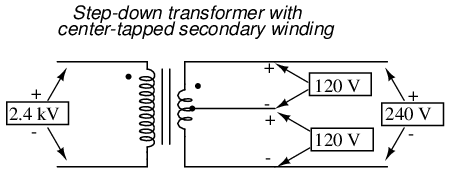mivey
Senior Member
You guys are relentless. Must ... resist ... too late: :grin:If there's a neutral.
The historically-labled two phase can have 3, 4, or 5 wires. The three & five wire cases have neutrals.
As for the rest:
In the general definition of a multiphase system, the number of phases for the system is the number of equal magnitude and equal frequency waveforms with different angles. In the canonical definition of a multi-phase system, we get the added constraint that a n-phase system will have n waveforms evenly displaced by 360/n degrees.
The historically-labeled two phase system with a 90 degree separation is really a subset of a canonical four-phase system but also meets the general definition of a two-phase system (as would separations of 91 or 92 or 93 or 94 or ... degrees).
We have adopted conventions for naming the systems we use. The naming conventions are not consistent, but they are what they are. To avoid confusion, we stick with the naming conventions everyone has become accustomed to.
Note that most of the time these naming conventions are based on how the phases were being used instead of using the general or canonical definition.


